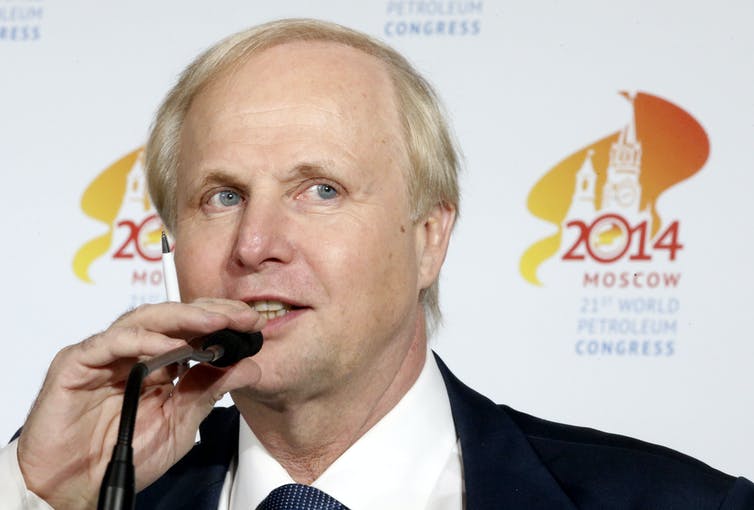 Author: ead of HR Research Development, Institute for Employment Studies, Lancaster University
Author: ead of HR Research Development, Institute for Employment Studies, Lancaster University
There has always been something inherently grubby about the executive pay debate. Many of us are happy to accept that the responsibility of running a big business should be handsomely compensated. But many are also left with an uncomfortable feeling that too many top executives are being rewarded for greed or failure, or both.
The announcement by the UK government that the largest of the UK’s listed companies should be required to publish (and explain) figures showing the ratio of CEO pay to average pay in their business is an attempt to shine a light into the darker corners of executive remuneration. But will this work and, if not, are tougher measures justified?
There is no doubt that the pay gap is getting wider. Among FTSE 100 companies in the UK, the ratio of CEO pay to average pay in 1998 was 47:1. By 2017, this gap had increased to 129:1. For comparison, the 2015 figure among CEOs in the US was 335:1. The widening of the gap was not slowed significantly by the financial crisis and shows no sign of diminishing over the next decade. This has had a mobilising effect on both campaign groups and on some investors who believe such wide dispersion is unacceptable.
In the UK, January 4, 2017 was dubbed “Fat Cat Wednesday” by the High Pay Centre think tank because it represented the day by which a FTSE 100 CEO has earned more than the average UK worker earns in a year. In April 2016, BP shareholders staged one of the biggest recent revolts against a planned executive pay increase when the board proposed to raise CEO Bob Dudley’s pay by nearly 20 per cent, in a year when the company had also run up a US$6.5 billion loss, cut thousands of jobs and frozen employee pay.

Some 59 per cent of votes cast by shareholders went against the proposals. Under current UK rules, the vote was non-binding, but the message it sent to the board and to the City of London was unambiguous. BP decided it had little choice but to cut Dudley’s pay.
Less focus on ‘fair’
So why has the gap grown to the point where even City investors are rebelling? Well, it hasn’t grown by the same rate across all sectors with lower ratios (68:1) in financial services mainly because it is a generally high-paying sector. Ratios are higher in retail, by comparison, where low pay remains an issue.
There are exceptions, of course. Charlie Mayfield, chairman of the John Lewis Partnership, is paid 60 times the average (compared with 345:1 at Tesco and 191:1 at Sainsbury’s). However, John Lewis is an employee-owned business and was a pioneer of the principle that a wide pay gap regarded as disproportionate can damage the fabric and “common purpose” of the business.

One reason for the gap is that CEO pay is compared across sectors, while low paid retail workers never have their pay rates compared with investment bankers or offshore rig operatives. Another is that remuneration committees often attach more importance to external rather than internal comparators. This means that they worry less about having an internally coherent pay structure which feels fair to employees than one which enables them to attract a “megastar” CEO when they need one.
Another, slightly more technical reason, is the growing complexity of CEO reward packages. Many executives have several components to their deals so that if they are forced either by the market or by regulation to restrain one element, they seem able to make up the difference with another. This can mean that, if basic pay is kept low, then bonuses or stock options can appear to rise to compensate.
Open plan pay
These kinds of concerns have prompted the UK government’s action, which echoes that of the US where the Dodd-Frank Act will also require the publication of pay ratios from this year. But this is more than just an issue of reporting. The hope is that CEO pay decisions will look more at internal pay relativities and the message that big rises in executive pay send to employees facing another year of pay freezes.

The connections between leaders and the led really matter in modern organisations. The financial crisis challenged the fragile bond of trust between bosses and employees, and widening pay gaps at a time of wage growth stagnation for most UK workers can only make things worse.
This makes the example of IT training company Happy Computers especially interesting. The CEO, Henry Stewart, set up a spreadsheet on the company intranet which contains both the current pay of all staff (including his) and their pay history. Aside from creating a strong, common bond between employees and a sense of fairness and transparency, the dispersion of pay is very narrow. Stewart is very proud of this innovation and believes the company benefits enormously. When he asks other CEOs why they don’t do the same, he says the most common answer is: “Our pay isn’t fair”.
Not everyone agrees that a focus on pay ratios is the best way to enforce restraint. Alex Edmans of London Business School argues, with some justification, that pay ratios can lead to perverse incentives: the temptation might be, for example, to outsource low-paid jobs in order to inflate the average pay used to calculate the ratio. The current proposals are intended as a nudge towards greater transparency, with the threat of tougher regulation if they fail to bring about restraint.
Unfortunately, there is no science to proportionality. The “comply or explain” approach to publishing pay ratios may slow down the rate at which the pay gap widens, and might even enforce a de facto cap, but there must be more doubt as to whether it can apply enough pressure to narrow the gap at all.





